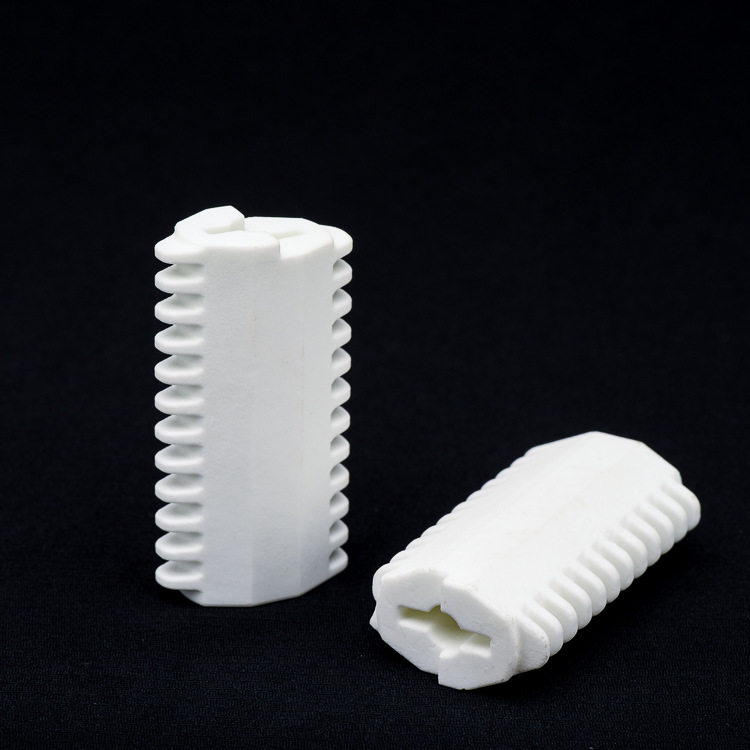Alumina ceramic stands as one of the world’s premier advanced materials, revolutionizing industries with its exceptional properties and performance. Composed primarily of aluminum oxide (Al2O3), alumina ceramic’s revolutionary properties make it indispensable to many fields beyond materials science itself – it fuels significant advances in technology as well as industrial applications ranging from aerospace manufacturing and automobile production through medical devices manufacturing to electronic substrate applications alumina ceramic has proven its worth time after time. Few materials match its durability, resistance, and versatility like this cornerstone material does.
Unrivaled Mechanical Properties and Durability
Alumina ceramics are known for their exceptional mechanical strength and hardness, rivaling that of some of the toughest materials known. Boasting an Mohs hardness rating close to that of diamond, alumina has unparalleled wear resistance; making it suitable for high wear environments where longevity and erosion resistance is vitally important – such as cutting tools, wear resistant linings, or grinding media applications where material longevity directly impacts operational efficiency or maintenance costs.
Thermal Stability and Insulation.
One of alumina ceramic’s hallmark characteristics is its exceptional thermal insulation properties and ability to withstand high temperatures without degrading its integrity, with melting points over 2,000degC acting as an exceptional refractory material and thermal insulators, such as furnace linings, thermocouple tubes and heat exchanger components requiring extreme temperatures protection – including in the electronics sector where substrate materials such as this serve to dissipate heat generated by electronic components efficiently.
Electrical Insulation and Dielectric Strength.
Alumina ceramic’s usefulness in electrical applications is highlighted by its superior insulation properties combined with high dielectric strength. As such, this material makes an essential addition to electronic component production lines for electronic insulators, spark plugs, substrate plates for electronic circuits as well as spark plug casings and substrate plates for electronic circuits. Alumina ceramic components also stand up well under high voltages without discharging electrical discharges – essential characteristics in household appliances to high voltage electrical installations!
Biocompatibility and Medical Applications.
Alumina ceramics have long been recognized for their biocompatibility in medical fields such as prosthetics and implants, making them highly desirable materials in medicine. Alumina’s ability to integrate without adverse reaction with bodily tissues makes them suitable for bone replacements, dental implants, biomedical sensors as well as their hardness and wear resistance which provide lasting durability not possible with metal or polymeric materials.
Chemical Stability and Corrosion Resistance of Polypropylene Films
Alumina ceramics feature outstanding resistance to corrosion and chemical attack, making them suitable for use in environments where other materials would quickly degrade. Their chemical inertness makes alumina ceramics the ideal material to use for chemical processing applications in reactors, separators and conveyance systems exposing acids, bases and solvents; Alumina helps avoid contamination while upholding purity during chemical processes while cutting maintenance frequency down significantly.
Environmental Impact and sustainability.
Production and use of alumina ceramics align with environmental sustainability goals, with their material coming primarily from abundantly available bauxite ore. Furthermore, their long lifespan reduces replacement needs while decreasing wastefulness – perfect for energy intensive industries that aim to decrease their carbon footprint! Finally, their insulation properties offer significant energy conservation, furthering eco-friendliness.
Future Prospects and Innovations.
Future prospects of alumina ceramics look bright as ongoing research and development expand their applications and increase their properties. Advancements such as additive manufacturing will revolutionize how alumina ceramics are designed and utilized, opening doors to complex geometries previously impossible or too expensive to obtain. Such innovations could pave the way for tailored applications within aerospace, defense, electronics and medical device technologies – further solidifying alumina ceramics’ place within future technological innovations.
Considerations and Limits in Order to Meet Goals
While alumina ceramic offers numerous advantages, it also presents some obstacles in terms of its brittleness and fracture toughness. Research is currently ongoing to address these limitations through composite materials or novel fabrication techniques that increase toughness while not altering inherent strengths of alumina ceramics. As technological and material science barriers are removed from its application landscape, so too will its applications grow over time.
Conclusion Alumina ceramics represent an outstanding accomplishment in materials engineering, offering unique properties essential for high performance applications across many industries. As technology and industrial applications advance further, alumina ceramics will play an increasingly crucial role. Flexible, robust, and environmentally responsible materials like polystyrene are not simply materials of choice – they form the cornerstone for innovation and efficiency in 21st-century societies. As industries advance, their need for resilient materials that provide sustainable solutions and drive technological progress will only increase – making alumina ceramics perfectly equipped to take on these challenges and shape the future of material science and engineering.
